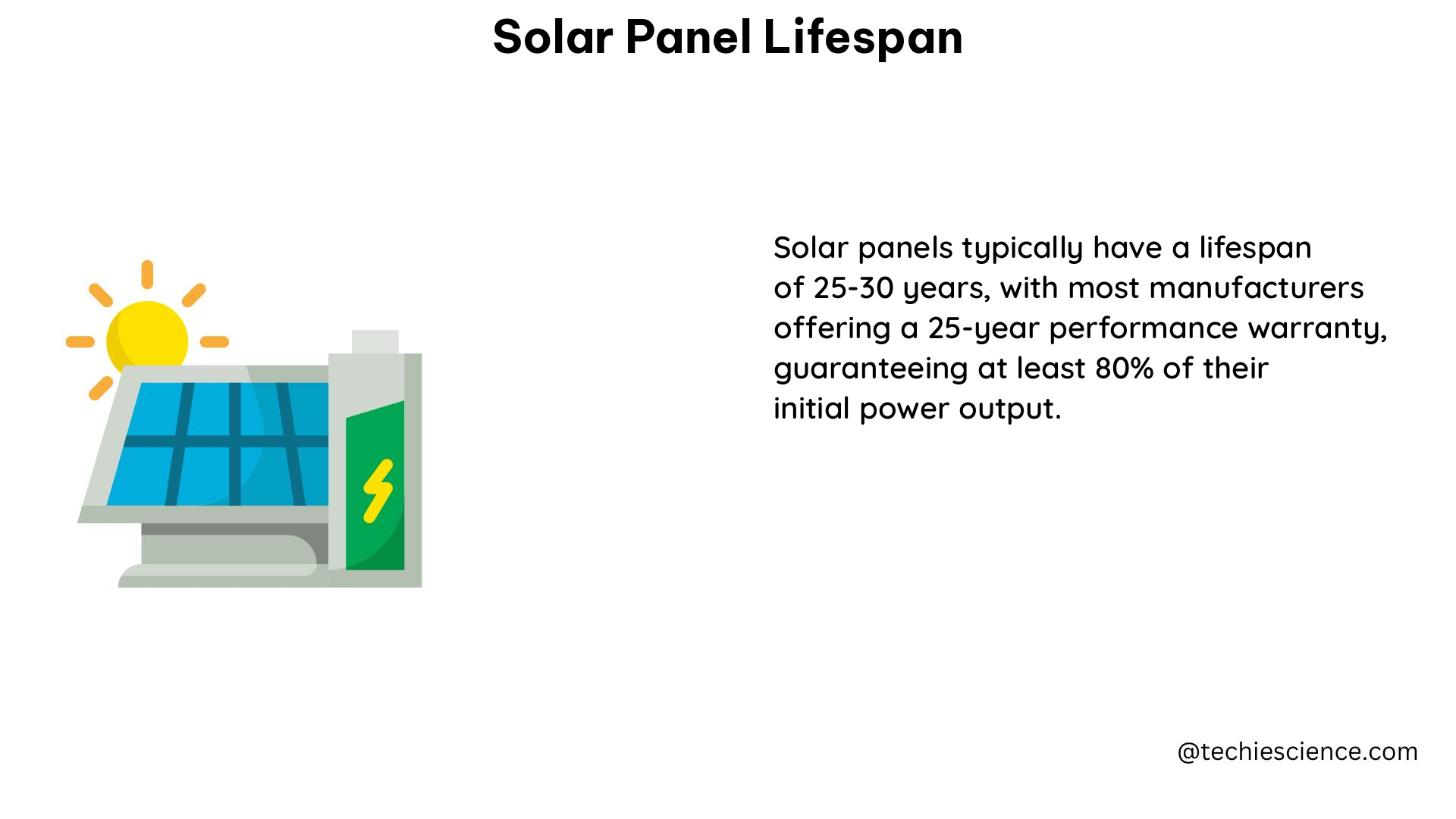Solar panel lifespan is a critical factor to consider when investing in solar energy. The estimated operational lifespan of a PV module is about 30-35 years, although some may produce power much longer. The degradation rate of solar panels, or the rate at which their electricity production decreases over time, is a crucial metric to understand for solar panel longevity.
Understanding Solar Panel Degradation Rates
According to a 2021 study by the National Renewable Energy Laboratory (NREL), solar panel output falls by an average of 0.5% to 0.8% each year. This means that after 25 years of use, the panels will still be operating at 82.5% to 87.5% of their original output, depending on the degradation rate.
The degradation rate of solar panels can be influenced by several factors, including:
-
Environmental Conditions: Exposure to extreme temperatures, humidity, and UV radiation can accelerate the degradation of solar panel components, such as the encapsulant, backsheet, and interconnections.
-
Installation Quality: Proper installation techniques, such as ensuring proper module tilt, orientation, and shading avoidance, can help minimize the impact of environmental factors on solar panel performance.
-
Maintenance and Cleaning: Regular cleaning and maintenance of solar panels can help maintain their efficiency and slow down the degradation process.
-
Panel Technology: Newer solar panel technologies, such as monocrystalline and bifacial panels, tend to have lower degradation rates compared to older polycrystalline panels.
To better understand the anticipated degradation rate of your solar panels, it’s essential to review the manufacturer’s warranty and performance guarantees.
Maximizing Solar Panel Lifespan with Warranties

Solar panel warranties are crucial in ensuring the longevity and performance of your solar energy system. Manufacturers typically offer two types of warranties:
-
Equipment Warranty: This warranty covers the solar panels against manufacturing defects and guarantees the structural integrity of the panels for a specified period, often 10-25 years.
-
Performance (Power) Warranty: This warranty guarantees that the solar panels will maintain a certain percentage of their original power output over time, typically 80-90% of the original output after 25 years.
By understanding the details of these warranties, you can better estimate the anticipated degradation rate of your solar panels and plan for any necessary maintenance or replacements.
Factors Affecting Solar Panel Lifespan
In addition to degradation rates and warranties, several other factors can influence the overall lifespan of solar panels:
-
Panel Quality: High-quality solar panels from reputable manufacturers tend to have longer lifespans compared to lower-quality panels.
-
Installation and Maintenance: Proper installation techniques, regular cleaning, and ongoing maintenance can significantly extend the lifespan of solar panels.
-
Environmental Conditions: Exposure to extreme weather, such as hail, heavy snow, or high winds, can potentially damage solar panels and shorten their lifespan.
-
Shading and Soiling: Shading from nearby trees, buildings, or other obstructions, as well as accumulated dirt and debris on the panel surface, can reduce the panels’ efficiency and accelerate degradation.
-
Inverter Lifespan: The inverter, which converts the DC power generated by the solar panels into AC power for your home or the grid, typically has a shorter lifespan than the solar panels themselves, around 10-15 years. Replacing the inverter can help maintain the overall system’s performance.
Extending Solar Panel Lifespan
To maximize the lifespan of your solar panels, consider the following strategies:
-
Choose High-Quality Panels: Invest in solar panels from reputable manufacturers with a proven track record of reliability and longevity.
-
Ensure Proper Installation: Work with experienced solar installers who follow industry best practices for panel placement, tilt, and orientation to optimize performance and minimize degradation.
-
Implement Regular Maintenance: Regularly clean the solar panels to remove dirt, debris, and any shading that could impact their efficiency.
-
Monitor System Performance: Regularly monitor your solar panel system’s output and compare it to the manufacturer’s performance guarantees to identify any potential issues early on.
-
Consider Panel Upgrades: As solar technology continues to evolve, you may be able to upgrade to newer, more efficient panels that can further extend the lifespan of your solar energy system.
By understanding the factors that influence solar panel lifespan and implementing best practices for installation, maintenance, and system monitoring, you can maximize the return on your solar energy investment and enjoy the benefits of clean, renewable energy for decades to come.
References:
- U.S. Department of Energy. (n.d.). End-of-Life Management for Solar Photovoltaics. Retrieved from https://www.energy.gov/eere/solar/end-life-management-solar-photovoltaics
- EnergySage. (2024-06-21). How Long Do Solar Panels Last? Retrieved from https://www.energysage.com/solar/how-long-do-solar-panels-last/
- Mahmoudi, S. H., Nazmul, A., Alavi, Z., Islam, M. T., & Behnia, M. (2019). End-of-life photovoltaic modules: A systematic quantitative literature review. Resources, Conservation and Recycling, 146, 259-271. doi:10.1016/j.resconrec.2019.03.021
- IRENA. (2016). End-of-Life Management: Solar Photovoltaic Panels. Retrieved from https://www.irena.org/-/media/Files/IRENA/Agency/Publication/2016/IRENA_IEAPVPS_End-of-Life_Solar_PV_Panels_2016.pdf
- NREL. (2021). Photovoltaic Degradation Rates in the Gulf Cooperation Council Region. Retrieved from https://www.nrel.gov/analysis/solar-degradation.html

The lambdageeks.com Core SME Team is a group of experienced subject matter experts from diverse scientific and technical fields including Physics, Chemistry, Technology,Electronics & Electrical Engineering, Automotive, Mechanical Engineering. Our team collaborates to create high-quality, well-researched articles on a wide range of science and technology topics for the lambdageeks.com website.
All Our Senior SME are having more than 7 Years of experience in the respective fields . They are either Working Industry Professionals or assocaited With different Universities. Refer Our Authors Page to get to know About our Core SMEs.